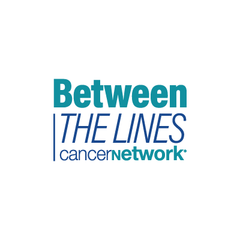
Key Takeaways and Clinical Implications
Michael R. Bishop, MD, and Bruce B. Bank, MD, summarize key takeaways from the ELEVATE-RR study and discuss the clinical implications of using BTK inhibitors in patients with CLL.
Episodes in this series

Michael R. Bishop, MD: Bruce, what do you think were the key takeaways from this paper?
Bruce B. Bank, MD: I suspect everybody might say this, but it’s the atrial fibrillation. In my experience, that has been the biggest bugaboo. This is a skewed sample, but I have quite a few patients on acalabrutinib, and none has developed atrial fibrillation. That has always been the main takeaway. I don’t have any question in my mind that it’s a superior drug to ibrutinib, even though ibrutinib paved the way for the class. It would be interesting to see what some of the newer BTK inhibitors achieve. There’s 1 in development, orelabrutinib. It will be interesting to see what that is like. I don’t think zanubrutinib is FDA approved for CLL [chronic lymphocytic leukemia] yet, but it’s also a very useful agent with a better adverse effect profile than ibrutinib.
Michael R. Bishop, MD: This was a very well-designed trial focusing on this higher-risk patient population, and we can extrapolate it to any relapse population. But when you specifically select out for the those with 17p deletions, which made up about 45%, and a high percentage of patients who had unmutated IGHV status, these were pretty good results. It placed the context of toxicities, which is important. When you have 2 great drugs in terms of efficacy, I agree that you have to go with the safer one. You have to take it twice a day, but that’s a small price to pay in terms of improvement in toxicities.
Taking that further biologically, do you think about that when they have that more specific selection for Bruton kinase inhibition as opposed to off-target? When you’re looking at data, does that make you think about the biology underlying these Bruton kinase inhibitors?
Bruce B. Bank, MD: I do, and I find this stuff fascinating. I wish I had more time to understand it as well as some of you high-level experts do. It’s very interesting why this drug would have such a profound effect on myocytes.
Michael R. Bishop, MD: Yes, and you bring up a great question. When you want to learn a lot, they crammed the information into the paper, and the introduction talks about the biology. John Byrd is the lead author, and he sleeps this. He gives a fine background. For those of you who want great [information] about Bruton kinase inhibitors and biology, they talk about that and some of the potential targets that are kinases that are seen in cardiac myocytes. That’s a great point, Bruce. Is there anything in the paper that you didn’t like or wish they’d done differently or have questions about?
Bruce B. Bank, MD: No. I don’t know how it is in your practice, but we do the whole molecular profile looking for the IGHV status, 17p status, and everything. But at this point, I don’t find those to be therapy-directing. They’re prognostic, and they allow me to think about it, but I don’t use BTK inhibitor drugs only for people who have 17p deletion. I use them for any patient with CLL who requires treatment.
Michael R. Bishop, MD: You’re right. It’s changed. We would have thought about potentially using some of that data to guide therapy. But on a relative scale, it’s negated that. But I still use it for important prognostic information. As we saw, the progression-free survival was slightly worse for the patients with 17p deletions, but it’s more prognostic as opposed to therapeutic. I totally agree with that.
Transcript edited for clarity.
Newsletter
Stay up to date on recent advances in the multidisciplinary approach to cancer.


















































































